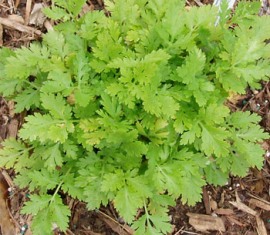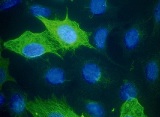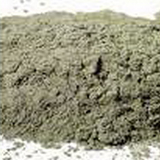 Parthenolide is a substance found in several plants including Feverfew and Magnolia. Feverfew has been used for the treatment of migraine, arthritis, fever, and stomachache. Besides its anti-inflammatory and anti-migraine properties, parthenolide also shows anticancer activities in a variety of cancers. It contains an alpha-methylene-gamma-lactone ring and an epoxide moiety which are able to interact with nucleophilic sites of biologically important molecules.
Parthenolide is a substance found in several plants including Feverfew and Magnolia. Feverfew has been used for the treatment of migraine, arthritis, fever, and stomachache. Besides its anti-inflammatory and anti-migraine properties, parthenolide also shows anticancer activities in a variety of cancers. It contains an alpha-methylene-gamma-lactone ring and an epoxide moiety which are able to interact with nucleophilic sites of biologically important molecules.
Parthenolide modulates multiple targets, thereby contributing to its various effects. Inhibition of NF-kB activity, constitutive in many types of cancers, is considered one of the main mechanisms of its action. Study shows that parthenolide’s ability to inhibit NF-kB activity was enhanced by PTEN. PTEN is one of the most commonly lost tumor suppressors in human cancer.
NF-kappaB pathway inhibitors preferentially inhibit breast cancer stem-like cells.
There’s good and bad news in the study. Study shows that parthenolide activates the PI-3K/AKT signaling pathway. Since this pathway plays a fundamental role in cancer growth and survival, this is bad news. PI3K/AKT pathway components are frequently altered in human cancers. Cancer treatment by chemo and radiation kills target cells primarily by the induction of apoptosis. However, the development of resistance to therapy is an important clinical problem. Failure to activate the apoptotic programme represents an important mode of drug resistance in tumor cells. Survival signals induced by several receptors are mediated mainly by PI3K/AKT. Fortunately, as discussed in the previous essay, genistein activates the PTEN gene which inactivates PI-3K/AKT pathway. Therefore, parthenolide and genistein should be taken together. These are extremely synergistic in the killing of cancer cells.
Moreover, parthenolide reduces the cellular level of Glutathione (GSH) in cancer cells, followed by ROS accumulation and apoptosis. A unique property of parthenolide is its ability to induce cell death mainly in cancer cells, while sparing healthy ones and it also protects normal cells from UVB and oxidative stress.
 More remarkably, it seems to have the potential to target some cancer stem cells. Its wide array of biological activity and low toxicity make parthenolide a very promising drug with multi-pharmacological potential, largely dependent on the cellular context.
More remarkably, it seems to have the potential to target some cancer stem cells. Its wide array of biological activity and low toxicity make parthenolide a very promising drug with multi-pharmacological potential, largely dependent on the cellular context.
Molecular biology of breast cancer stem cells: Potential clinical applications.
Feverfew: weeding out the root of leukaemia.
In addition, inhibition of STAT and MAP kinase activities and the induction of sustained JNK, a death pathway, activity as well as p53 activity via influencing MDM2 and HDAC1(histone deacetylase 1) levels lead to an increased susceptibility of cancer cells to chemo- and radiotherapy. At the epigenetic level, parthenolide reduces HDAC1 level and induces global hypomethylation of DNA, which can restore the expressions of some suppressor genes.
When DNA is severely damaged, a variety of enzymes are activated which result in the death of the cell. The process of apoptosis prevents mutated cells from proliferating and forming cancers. This is the senario. DNA damage activates a variety of enzymes which further activates tumor suppressors such as p53. P53 promotes the synthesis of p21 and p27 which restrict cell cycle progression through both the G1 and G2 portions of the cell cycle. This promotes apoptosis. HDAC1 is antagonistic to p53 and prevents this cell cycle inhibitor mediated cellular death. Parthenolide directly or indirectly modifies the HDAC1 enzyme, which can restore the expressions of some suppressor genes such as P53. This modification results in the degradation of HDAC1 in the proteasome. Proteasome inhibitors, such as EGCG, cannot therefore be used with parthenolide. Parthenolide may overcome the resistance to chemo drugs by restoring the p53 tumour-repressor function via its hyper-acetylation and nuclear migration, events usually impaired in tumours
Histone deacetylase inhibitors in cancer therapy.
Targeting histone deacetylases in neuroblastoma.
Inhibitors of histone deacetylase (HDAC) restore the p53 pathway in neuroblastoma cells.
Targeting the cell division cycle in cancer: CDK and cell cycle checkpoint kinase inhibitors.
Essential function of histone deacetylase 1 in proliferation control and CDK inhibitor repression.
 Parthenolide is practically insoluble in water and is not suitable for human consumption. Many vendors of feverfew remedies specify the content of parthenolide in their products. Lack of solubility in water limits the benefits of parthenolide as a drug, and now motivates drug researchers to develop synthetic analogs that will be easier to absorb. Unfortunately, dietary parthenolide in supplement form didn’t help cancers due to extremely low solubility/bioavailability. There are several pharmacokinetic studies about parthenolide’s low solubility/bioavailability, which means that most of what we swallow goes directly into our gastrointestinal area and is expelled. In order to introduce pure parthenolide into the blood via absorption and maximize the activity of parthenolide in the body, you have to use ButturZym. ButturZym is the only product in the world that has perfect solubility/bioavailability of high purity parthenolide enough to induce apoptosis of the cancer stem cells. For many years now, ButturZym has been used with great success on so many terminally ill patients. Otherwise, parthenolide wouldn’t have worked.
Parthenolide is practically insoluble in water and is not suitable for human consumption. Many vendors of feverfew remedies specify the content of parthenolide in their products. Lack of solubility in water limits the benefits of parthenolide as a drug, and now motivates drug researchers to develop synthetic analogs that will be easier to absorb. Unfortunately, dietary parthenolide in supplement form didn’t help cancers due to extremely low solubility/bioavailability. There are several pharmacokinetic studies about parthenolide’s low solubility/bioavailability, which means that most of what we swallow goes directly into our gastrointestinal area and is expelled. In order to introduce pure parthenolide into the blood via absorption and maximize the activity of parthenolide in the body, you have to use ButturZym. ButturZym is the only product in the world that has perfect solubility/bioavailability of high purity parthenolide enough to induce apoptosis of the cancer stem cells. For many years now, ButturZym has been used with great success on so many terminally ill patients. Otherwise, parthenolide wouldn’t have worked.